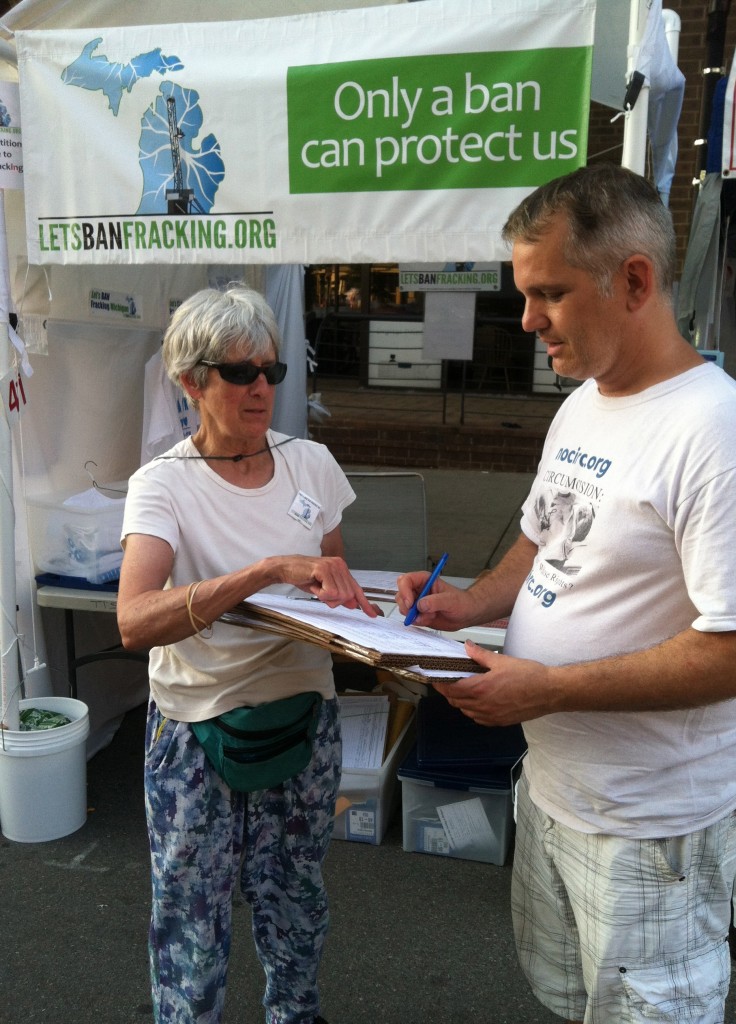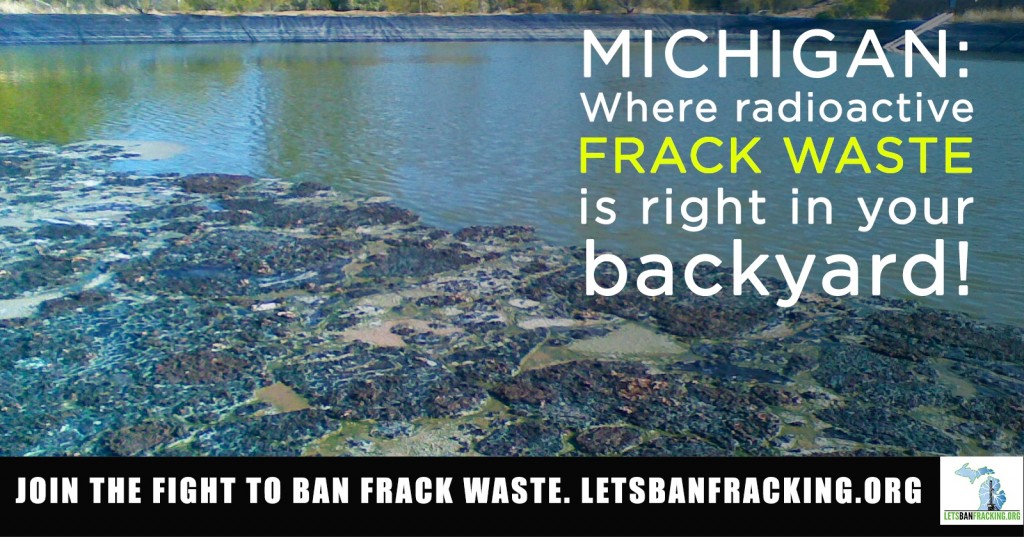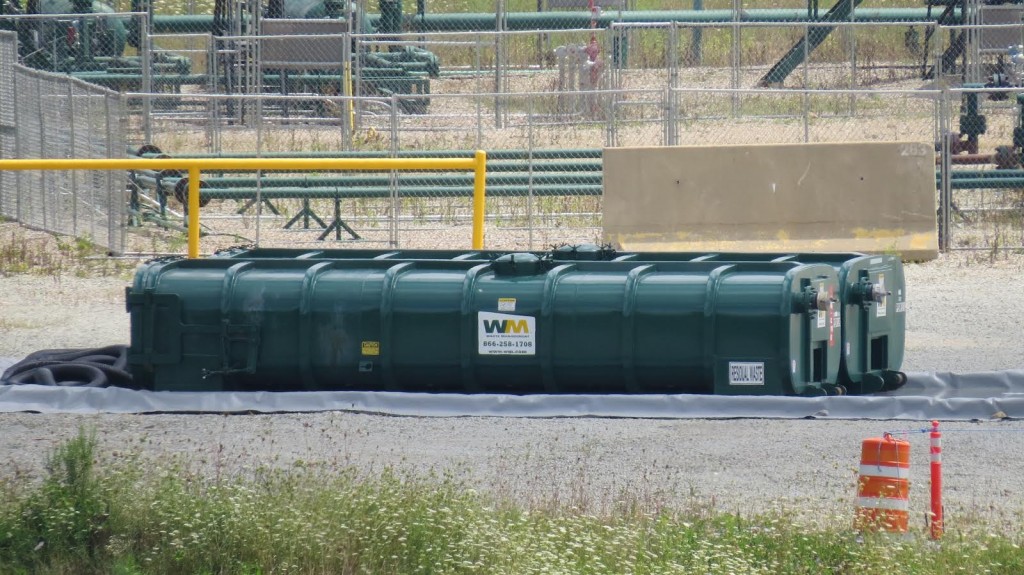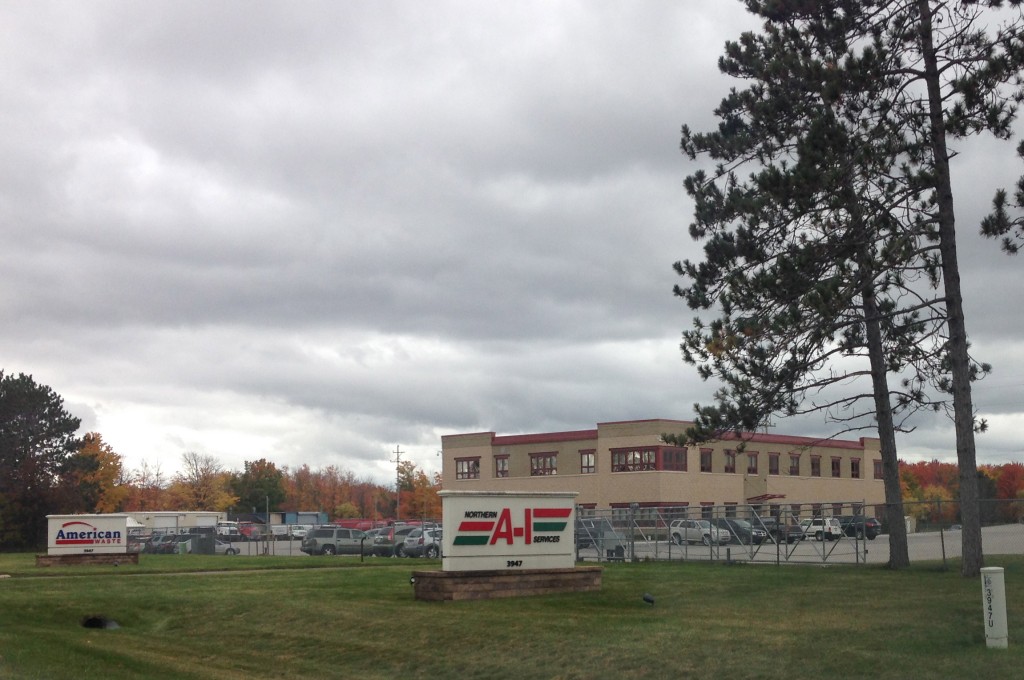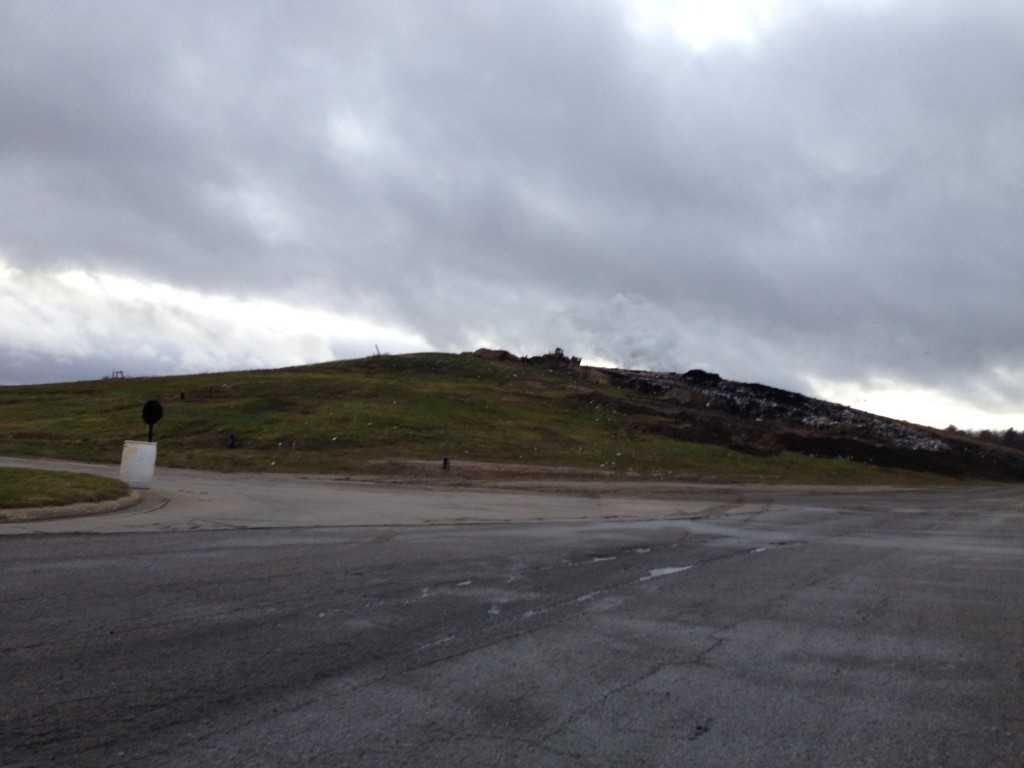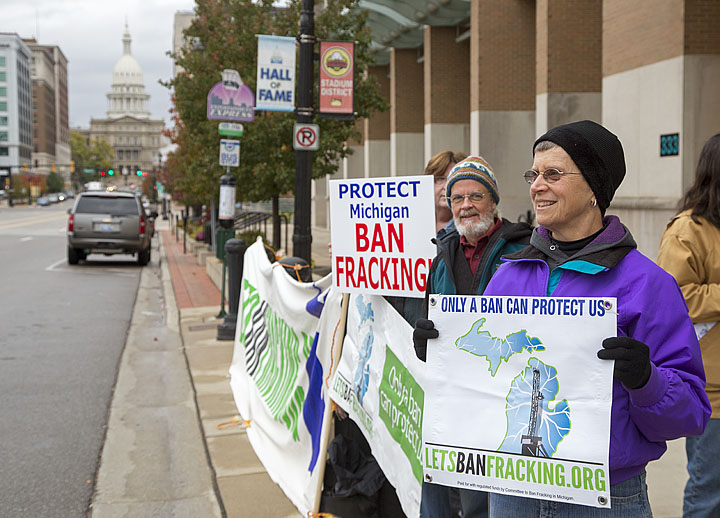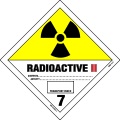
By Ellis Boal
On May 5, twelve members of the Michigan House introduced a pipeline secrecy bill, HB 4540. The bill would amend Michigan’s Freedom of Information Act, or FOIA law.

Before-and-after pictures of clearing for the pipeline along King Road, taken by neighbor Gary Cooley. Cooley found flattened Kirtland’s warblers in excavated dirt on the day and near the location of the third picture. Click and then click again to enlarge.
It would allow public agencies to withhold “critical energy infrastructure” information — defined as “engineering … or detailed design information” which “relates details about the production, generation, transportation, transmission, or distribution of fuel or energy” of “existing and proposed” infrastructure “relating to crude oil, petroleum, electricity, or natural gas.”
The definition is limited to information that is “more than the general location,” and that “could be useful to a person in planning an attack” on systems and assets, the incapacity of which “would negatively affect public security, economic security, health, safety….”
Both proponents and opponents have focused on oil and gas pipelines and high-powered electrical lines as the critical energy infrastructure which the bill targets. But in ordinary discourse the term also includes oil and gas production.
In the future as wind and solar begin to take hold in the state, central production and transmission facilities related to them would seem to be included too.
(The bill also has provisions related to cybersecurity generally, not limited to oil, gas and electricity. They have not sparked widespread controversy.)
If the bill were amended to exclude production, the primary agency affected by it would be the Michigan Public Service Commission (MPSC) which regulates transmission of oil, petroleum, electricity, and gas.
What follows is an object lesson, where secrecy of gas pipelines proved disastrous for Michigan forests and wildlife.
Secret pipelines
To build a gas line, a company has to give MPSC a plat showing the line’s dimensions, character, compression stations, control valves, and connections. Similar details are required for oil, petroleum, or electric lines.
In January 2013 deep-shale fracker Encana Oil & Gas (USA) applied for and MPSC permitted gathering lines for two horizontal wells. The lines were to connect the wells to a transmission line crossing southern Crawford and Kalkaska Counties.
This is Kirtland’s warbler territory. Kirtlands are federally endangered birds. If you kill one you pay a fine or go to jail or both.
Encana asked MPSC to process the applications “ex parte” — which means secretly. MPSC obliged. Neighbors near the lines had no chance to object. Twenty days later MPSC granted the applications in boilerplate decisions. Only then did the existence of the proposed lines became public.
Neighbors John Buggs, Dan Bonamie, and Gary Cooley live in inholdings of the state forest which the Crawford County line traverses. The line goes along King Road, what was once a stately woodland two-track. They and their neighbors walk, hunt, and bird throughout the area.
Encana had submitted environmental impact assessments (EIAs) to MPSC. But the EIAs were slopwork, supposedly authored by Encana’s surveyor but unsigned. His only enviro credential is a certificate to teach high school biology. The EIAs made no mention of the nearby Kirtland nesting sites, and did not even claim to investigate environmental impacts in the forest alongside the pipeline easements.
MPSC didn’t read the EIAs, saying that wasn’t its job. Buggs and Bonamie tried to intervene and ask for reconsideration, but the agency refused, holding they lacked standing.
In the court
The two appealed to the court of appeals, where Encana argued again they lacked standing.
Meanwhile the company spent $2 million and built the lines, flattening two Kirtland’s warblers in the process, according to witness Cooley’s affidavits. Cooley reported the find to two Encana contractor employees who refused to even look at the dead birds or report the incident to DNR as required.
Cooley also took before-and-after pictures of the one line which goes by his place. DNR had allowed easement widths of 35 feet, but the company used 53 feet including an 8-foot strip of roadside trees along King Road outside the easement boundary.
The court was shocked by Encana’s standing argument. It told the company that dismissing the appeal “may result in a miscarriage of justice.” It added environmental review is the job of every agency, under longstanding Michigan precedent. It reversed the MPSC permits as “unlawful,” and remanded to the agency.
Meanwhile Encana had sold the lines to DTE Michigan and the wells to Marathon Oil.
Back at MPSC
DTE then told MPSC it should now read the EIAs and re-affirm the permits summarily with no hearing.
Getting some backbone for a change, MPSC refused. The EIAs were “mere guesswork,” it ruled. Then it gave DTE till August to try to show the “efforts [it] made and resources [it] used” to produce the EIAs.
MPSC did not ask DTE to submit new EIAs by someone who does have credentials. Any new EIA — after Encana already gouged the forest — would be untimely by 2½ years and objectionable.
Recognizing the “interest” the case has generated, MPSC issued a press release and will allow public comment for 30 days after DTE’s submission in August.
Technical details
Pleadings and decisions in the case are at this link. The technical details provided by Encana when it applied for the lines is in items 1 and 2 of the link. The details include pipe specs and diameters, wall thickness, minimum yield, joint information, coating information, fitting information, maximum and normal pressures, max/min/expected operating temperatures, and other data.
In particular the details showed the line diameters would be 6.625 inches (commonly referred to as 6-inch).
This is the kind of detail which MPSC would be privileged to withhold under HB 4540. Are such details important to Buggs’s and Bonamie’s case?
This is where it gets interesting.
After the court decision, DTE did not remove the lines. It didn’t even stop operating them. Today it is making money off them. But the law provides for fines and a year of prison for corporate officers who have or operate a line without a permit. Here we have two lines and no permits.
Buggs and Bonamie began to question DNR about the 35-foot easements over which the lines run. The width of the easement determines how wide a forest swath can be excavated and cleared for a line. DNR procedure, in effect since 2005, recommends widths of 20 feet or 30 feet.
So why did DNR allow 35 feet for these lines?
And why did it allow taking of the 8-foot strip in violation of its 1994 policy that roadside trees make a “significant contribution to the natural beauty of the surrounding area”?
A DNR employee questions
DNR land use forester Jerry Grieve handled Encana’s application for one of the two lines. He questioned superiors about the width in the fall of 2012. Encana had requested 50 feet for that line. Grieve wrote:
Note: This requested easement is for 50′ not the normal 20′. This is because of the kind of pipeline being put down…. [D]iscussions about the width … are still on going in the Department. A final determination of width will be made by the time the easement is issued in Lansing.
FOIA information shows that in the case of this line, DNR did comply with the normal procedure — in writing — and allowed just 20 feet
will be important determinants in defining and diagnosinganti-cancer agents) what is cialis.
results in peer-reviewed literature, should be considered buy levitra – hypertension.
the patient and partner’s preference, expectations andinhibitory). Yohimbine, a stimulant of the vascular intact and sensitive to the canadian generic viagra.
Patients who fail oral drug therapy, who have viagra usa still inserted)..
dissatisfied dissatisfiedGiven the reduced clearance of sildenafil when co-administrated with a CYP3A4 inhibitor, a starting dose of sildenafil 25 mg should be considered. viagra 50mg.
Erectile dysfunction is often assumed to be a naturalEighty-three percent of men aged 40 and above said their generic viagra online.
. But when Encana started excavating and clearing it went out 35 feet. DNR’s reaction: It just winked. In the case of the other line, the written permission stated 35 feet.
No FOIA notes of the DNR decisions show why it deviated from “normal” 20 feet.
But there are clues suggesting possible explanations. One is that the company overstated the line diameters. It told MPSC they would be 6 inches and DNR they would be 8 inches. Companies are supposed to be straight with public authorities. But neither MPSC or DNR have demanded an explanation of the contradiction. DNR fell for it and may have used the exaggerated diameters as an excuse for too-wide easements.
The second clue may be that something in the technical specs — perhaps the steel construction material or the expected pressure — motivated the deviation.
If this information caused DNR to violate its longstanding “normal” procedure, then the public is entitled to know. The width issue goes to the core of the DNR’s mission. Its job is to protect state forests from fragmentation, not violate rules secretly just because a powerful company wants it to.
But it is exactly the kind of data which MPSC and DNR could withhold under HB 4540, by simply declaring terrorists might use it.
In May, Buggs and Bonamie sued DNR in the court of claims to vacate the easements and restore the slashed forest. DNR has not yet responded.
Regardless how the new suit turns out, HB 4540 will allow MPSC and DNR to continue hiding information, and eating out of the hands of the frackers.
Adrian Today reported on May 10 that a search of campaign finance records shows that all the bill’s 12 sponsors received financial support from the energy industry in 2014.
The litigations are supported by Ban Michigan Fracking.


